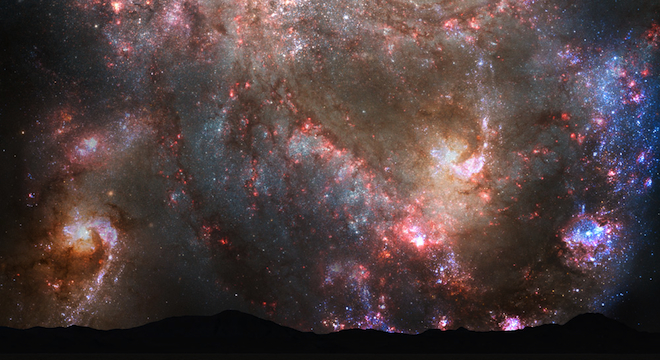Earth’s home, the Milky Way Galaxy, will collide with a nearby galaxy called Andromeda in 4 billion years, according to new observations made using NASA’s Hubble Space Telescope announced Thursday.
“Our findings are statistically consistent with a head-on collision between the Andromeda galaxy and our Milky Way galaxy,” said Roeland van der Marel of the Space Telescope Science Institute (STScI) in Baltimore, in a press release.
Andromeda, which is located 2.5 million light-years away, is moving rapidly towards the Milky Way at a rate of 250,000 milers-per-hour, a clip that will only increase as the galaxies approach.
The great galactic union isn’t expected to result in the destruction of Earth, the Sun, or any other planet in the solar system. In fact, no stars whatsoever are expected to collide becauase they are so far apart within each system.
But because the Milky Way is flatter than Andromeda, when the two spiral-shaped galaxies collide, they’ll form a single new elliptical-shaped galaxy that is more “three dimensional” in shape, with the merging complete 6 billion years from now.
During the course of the collision and merging, Earth’s Sun, and our entire solar system, will be flung from its current position to a new position on the outer edge of the new galaxy.
NASA released the following video animation of the collision:
The result for humans or any other observers on Earth at the time will be a “spectacular evolution of the night sky,” according to NASA scientists, as stars swarm into view and gas gets compressed to form even newer stars in the combined galaxy.
Here’s what the current night sky looks like in an ideal view, according to a NASA illustration:

Here’s the night sky 3.85 billion years from now, when the collision is set to be occurring in earnest, according to a NASA illustration:

Eventually, the familiar band of the Milky Way that can be seen in clear, rural areas, will be replaced with a uniform bright haze of a new elliptical galaxy, shown here, in an illustration of the night sky in 7 billion years, after the collision has been fully completed:

Well before that time, though, in about 1.4 billion years, the Sun’s luminosity is expected to have swelled to the point that life on Earth would currently be impossible without some technological intervention.
The galactic “merger,” had actually been postulated and predicted for the past 100 years, but until now, scientists had been able to say with certainty whether the two galaxies would actually smash into each other or whether they would narrowly miss one another. That’s because the Andromeda galaxy’s sideways motion couldn’t be determined with any certainty by existing instruments.
But thanks to new observations of the Andromeda galaxy made over a five-to-seven year period using the Hubble Space Telescope orbiting Earth, the sideways motion “remove[s] any doubt that it is destined to collide and merge with the Milky Way,” according to NASA.
Finally, there is a chance that a third galaxy, Triangulum, will actually hit Earth first or merge with the Milky Way and Andromeda later.






